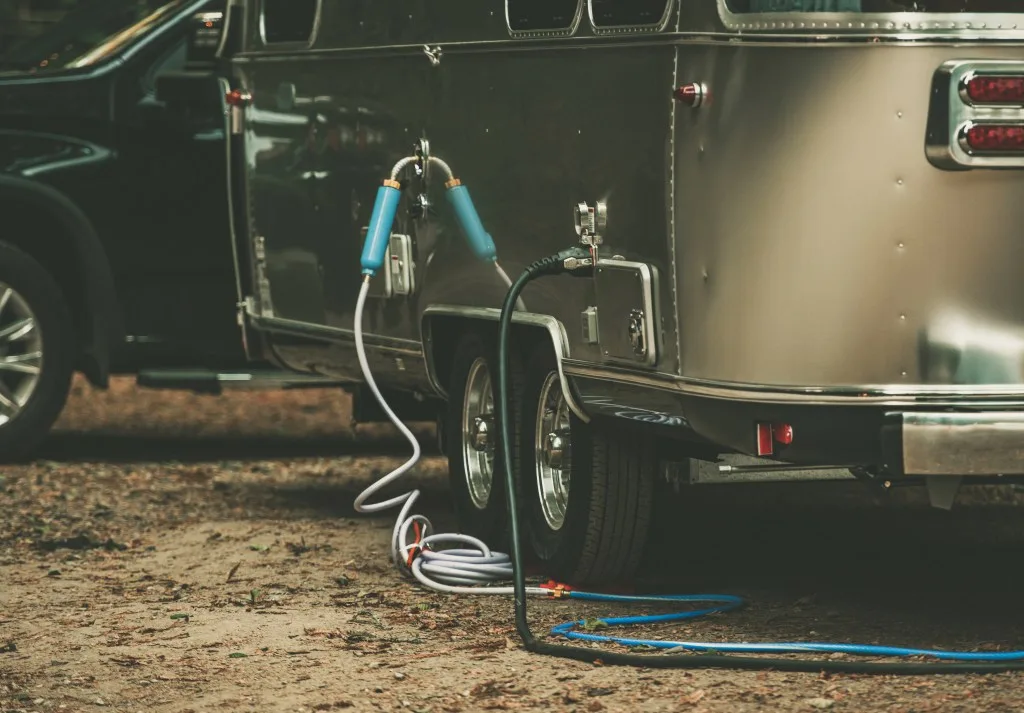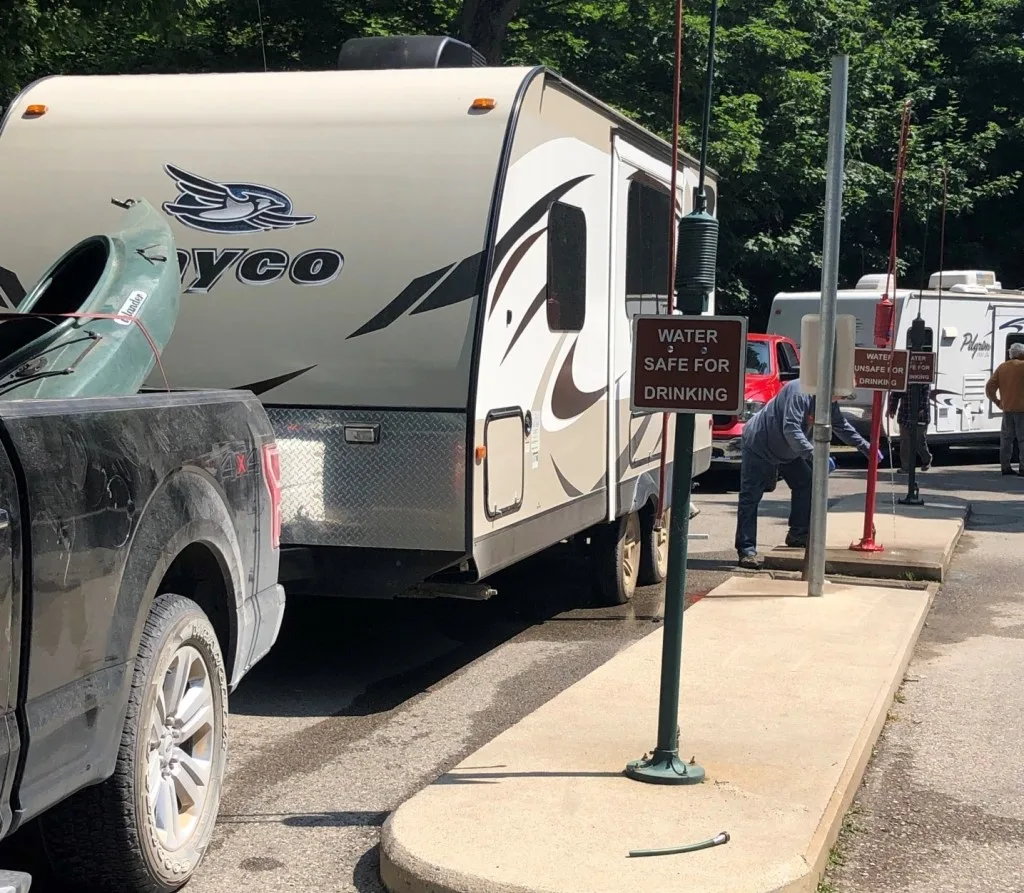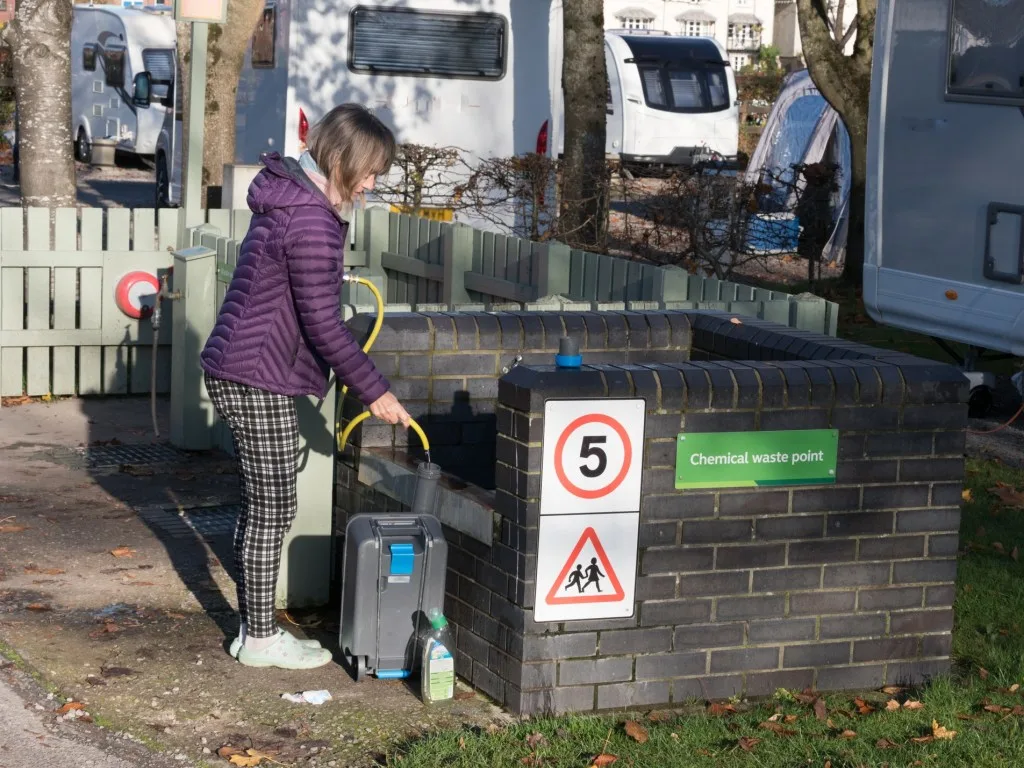Consider yourself lucky if you’ve never experienced a black hose mishap at the dump station. With so many new RVers hitting the road, we’re seeing more and more RV black hose mishaps at dump stations. It’s a painful mistake, but most RVers have been there at least once.
Today, we’re addressing one of the biggest mistakes in RVing in hopes that we can save you from a nightmare at the dump station. Grab your rubber gloves, and let’s get started!
What Are RV Black Hose Mishaps?
An RV black hose mishap is every RVers biggest nightmare. These accidents involve the contents of an RV’s black tank ending up on the ground and possibly on the RVer. These mishaps are often the result of the RVer making a mistake while dumping their tanks.
This is one mistake that many RVers only make once. Many RVers learn their lesson after the first mishap and commit never to experience that nightmare again.
Having the contents of an RV’s black tank shoot out at you and onto the ground is as bad as it sounds.
Are RV Black Hose Mishaps Common?
Black hose mishaps are more common than you would think. Many RVers experience these types of issues but rarely talk about them publicly. Getting covered in raw sewage and creating a mess at the dump station is likely not something many people enjoy sharing about their RVing adventures.
Don’t be too hard on yourself if you experience one of these mishaps. It’s a sort of initiation into RVing and even a badge of honor that the brave men and women who dump their RV tanks must wear.
Learn from your mishap and promise not to repeat the same mistake.

Common Mistakes RVers Make When Dumping
Getting in a hurry at the dump station is easy to do. The increased pressure from those around you waiting in line to dump their tanks can cause anxiety. However, being in a hurry and anxious often causes us to make mistakes.
So take a deep breath before exiting your vehicle to start dumping your tanks. We don’t recommend taking a deep breath while dumping your tanks. Trust us on this one!
Not Checking Connections
A loose connection is a bad connection when you’re dumping your tanks. Sewer hoses often require you to twist them on to lock them in place. If you’re not paying attention, you can easily fail to twist a hose onto your sewer connection.
When you open the valve to dump your tanks, the sewer hose can fly off, resulting in a stinky and gross mess in the surrounding area.
Always double check your connections to make sure they are tight and secure. Keep in mind that these are typically plastic and can break easily. We suggest you immediately replace any hose that has connections that are cracking or appear weak.
Pro Tip: Make sure you have one of these 5 RV Sewer Hose Fittings to Have on Hand when dumping your black tank.
Using Old Hoses/Attachments
You don’t want to trust old hoses and attachments with such an important job. Hoses can develop cracks and holes over time. If you notice leaks or drips while dumping your tanks, it’s time to invest in a new sewer hose or attachments.
You can typically find budget-friendly sewer hose kits with everything you need to dump your tanks. We recommend replacing your sewer hose and attachments every couple of camping seasons or when they show signs of wear and tear.

Not Closing the Valve When Finished
One of the biggest mistakes is forgetting to close the valve when finished. If you empty your tanks, no liquids should come out of the sewer connection at the end. However, only putting the cap back on the sewer pipe can create quite a surprise the next time you dump your tanks.
The second you remove the cap from the sewer pipe, you’ll be on the receiving end of a rush of raw sewage shooting out. Always close the valve before disconnecting and packing up your hose and attachments.
Being Distracted
Dumping your tanks can be rather boring and uneventful. If you’re at a busy dump station, starting a conversation with the person dumping at a nearby dump station can be tempting. However, most of us think we’re better at multitasking than we really are. Getting distracted can lead us to make costly mistakes.
There’s nothing wrong with saying hi to the other hero at the dump station dumping their tanks for their loved ones. However, fight the urge to get distracted by the conversation. Your full attention needs to be on dumping your tanks efficiently and effectively. You don’t want to waste time or make a mistake.
Smartphones are a huge distraction for many of us in everyday life. However, consider the items you’re touching and the potential germs on your hands that could easily find their way onto your phone. It’s a good idea to keep your phone in your pocket or put it up while you’re dumping your tanks.

How to Properly Dump Your Tanks
Despite the lengthy list of how to dump your tanks, it’s rather easy. The more you dump them, the more comfortable you’ll be and the less you’ll worry about making a mistake.
Find a Dump Station
You should only dump your tanks at approved dump stations. You can use apps like Campendium and iOverlander to easily pinpoint the locations of the nearest dump station. Find dump stations at campgrounds, truck stops, and even some rest stops.
Have the Proper Gear
As we said earlier, you can purchase RV sewer hose kits that have everything you should need to start dumping your tanks. You’ll typically need a sewer hose and the attachments to connect the hose to your RV and the dump station. Make sure you have these before heading out to camp or using your RV for the first time.
We also recommend always using rubber gloves when dumping your tanks. It’s a good idea to store them in a convenient spot so you can easily access them. When done, find a nearby trashcan to throw away the rubber gloves.
Connect Hoses/Attachments
Once you arrive at the dump station and gather your gear, you first want to connect the sewer hose to the appropriate attachments. This typically means putting an elbow on the end of the sewer hose that will fit into the dump station’s sewer drain hole.
Connect Hose to Dump Station
Now that you have connected the appropriate attachments to the sewer hose, you can place the elbow into the dump station. There’s typically a heavy rock or other items used by RVers to hold the sewer hose in place as the liquids flow through the hose.
Connect Hose to RV
With the sewer hose connected to the dump station, you can now connect the sewer hose to the RV. Before you go untwisting the sewer cap, it’s good to double-check to ensure that the sewer valves are closed. If everything checks out okay, place the sewer hose under the sewer pipe and untwist the cap.
This will allow you to catch drops of liquid that might have been sitting in the sewer pipe. Connect the sewer hose to the pipe and get ready to start opening drain valves.

Black Tank First
You should always dump your black tank first. This allows you to use the gray tank water later to rinse out the inside of the hose and eliminate any solid waste or bits of toilet paper that stick to the inside.
Once you open the black tank valve, make sure the sewer hose stays in the dump station drain. The heavy object should keep the hose securely in the hole. However, placing your foot on the elbow may be a good idea to ensure the initial rush of liquids doesn’t knock it out of the sewer drain.
Gray Tank Second
Once the black tank has finished draining, you can repeat the steps with the gray tank. Depending on how full your tanks are and how much liquid you will be dumping, the gray tank can also create tremendous force during the initial stages. Keep an eye on the sewer hose’s connection to the dump station drain. You don’t want to dump gallons of gray tank water onto the ground.
Close All Valves
Once all of the tanks are empty, make sure you close all of the valves. That will help ensure that you don’t have any surprises the next time you go to dump your tanks. This step is easy to overlook since there should be no more liquids draining from the sewer pipe. Close the valves, remove the hose, and place the sewer cap back onto the RV’s sewer pipe.
Properly Store Gear
Now is the time for you to put your sewer gear back into storage. It’s a good idea to store it in a plastic container to prevent bacteria from getting onto other items in your storage or making a mess.
Once everything is returned, you can remove your rubber gloves and find the nearest trash can. It’s a good idea to also thoroughly wash your hands or use hand sanitizer in a pinch.
Pro Tip: Can’t find a dump station? We uncovered Where To Dump Your Black Tank When Boondocking.
Avoid a Poopsie
As we said earlier, poopsies are a common RV black hose mistake that just about every RVer experiences at one point. It’s easy to beat yourself up over the mistakes, especially if you get it on your clothes or shoes. You end up smelling like raw sewage until you can get a shower and change clothes. It’s not a pleasant experience, and it’s likely only that you will never repeat it.
What have been some of your black hose mishaps? Tell us about your experience in the comments!
Discover the Best Free Camping Across the USA
To be honest with you, we hate paying for camping. There are so many free campsites in America (with complete privacy).
You should give it a try!
As a matter of fact, these free campsites are yours. Every time you pay federal taxes, you’re contributing to these lands.
Become a FREE CAMPING INSIDER and join the 100,000 campers that love to score the best site!
We’ll send you the 50 Best Free Campsites in the USA (one per state). Access the list by submitting your email below: